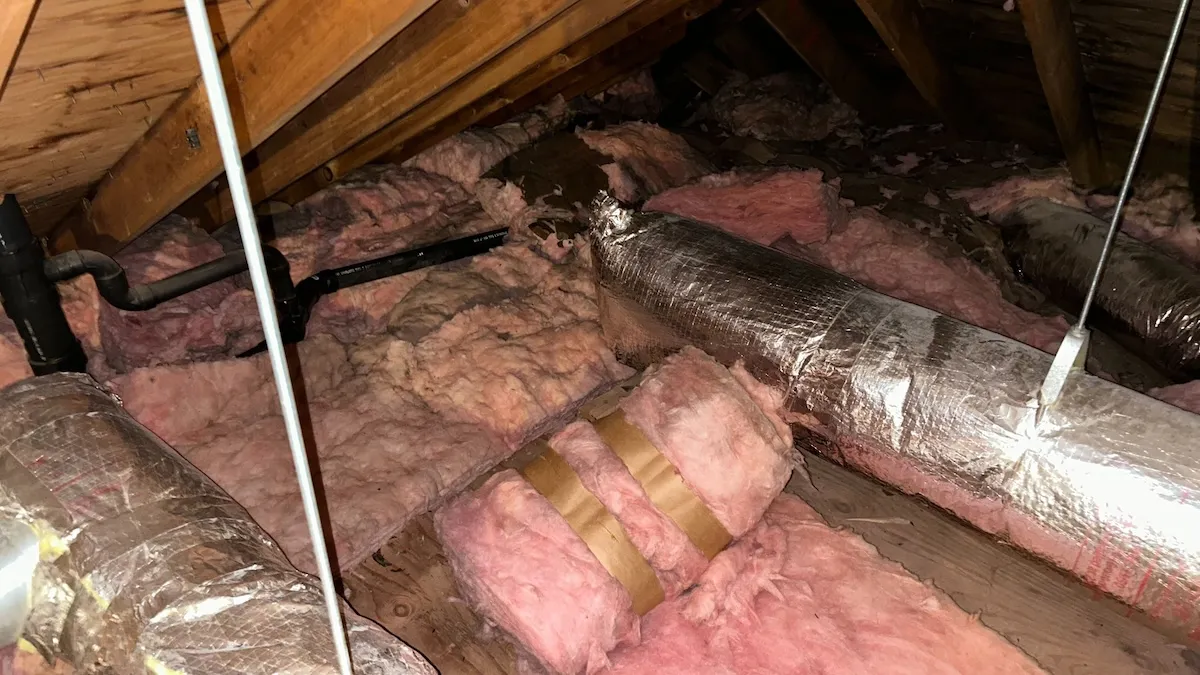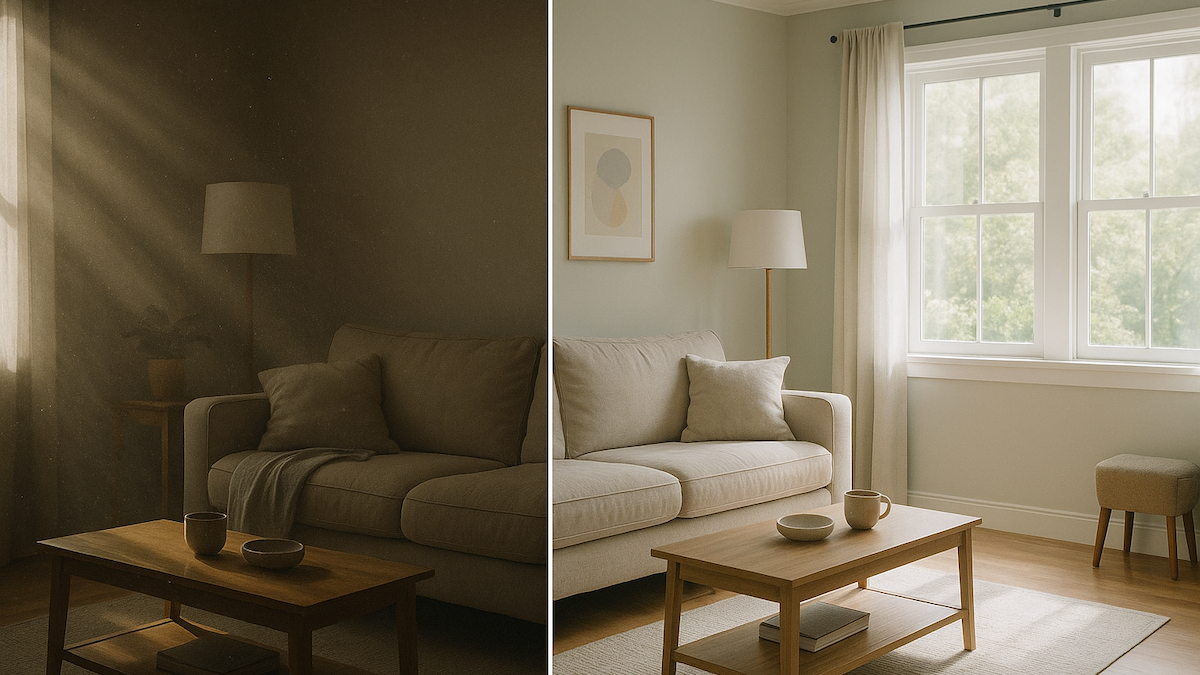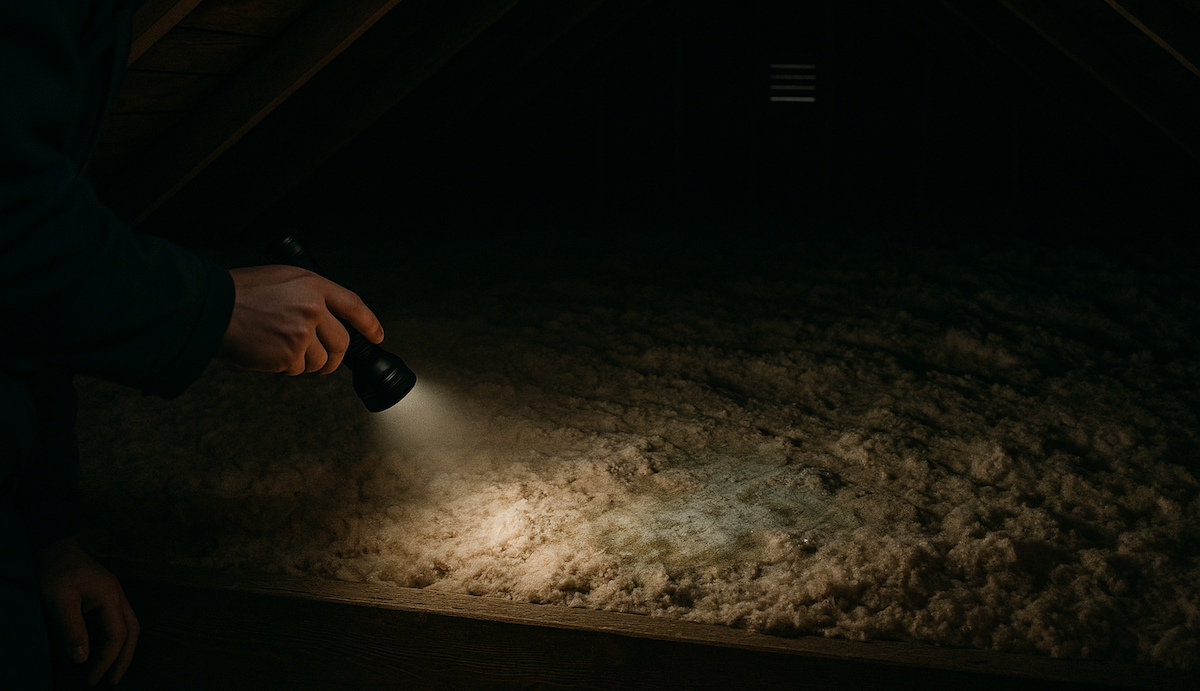Which Attic Insulation Type Offers the Best Energy Efficiency—and Why?

Let’s get one thing out of the way: insulation isn’t sexy. But you know what is? Lower energy bills, a more comfortable home, and not hearing your HVAC wheeze like it’s running a marathon.
If your attic is under-insulated—or insulated with the wrong stuff—you’re basically paying to heat the outdoors. And in Connecticut, where the seasons come in hot and cold (literally), that’s a losing game.
So which attic insulation type actually delivers when it comes to energy efficiency? Let’s break it down.
What Makes Insulation “Energy Efficient,” Anyway?
Let’s get one thing straight: energy-efficient insulation isn’t just about stuffing something fluffy in your attic and hoping for the best. It’s about controlling how heat moves through your home—and more importantly, how to stop it from escaping like a dog that figured out the screen door.
The first thing folks bring up is R-value. That’s the measurement of how well a material resists heat flow. Higher R-value = better insulation performance. But here’s the kicker: R-value alone doesn’t tell the full story.
Imagine wearing a thick winter coat full of holes. That’s high R-value with bad air sealing. Doesn’t matter how “warm” the material is if drafts are whistling right through it. That’s why air sealing is the unsung hero of insulation. A well-sealed attic paired with the right material will keep your home warmer in winter, cooler in summer, and your HVAC system from running a marathon every day.
Another piece people overlook? Moisture control. Insulation that gets damp (looking at you, open fiberglass batts in a leaky attic) won’t perform well for long. And in a Connecticut climate, where humidity swings like a mood on Monday morning, that stuff matters.
So when we talk about energy-efficient insulation, we’re looking for:
- High R-value (per inch, especially in tight attic spaces)
- Strong air sealing (no sneaky drafts)
- Moisture resistance (so performance stays strong over time)
In short, the best insulation for energy efficiency does more than sit there. It seals, insulates, and holds up to weather, time, and the messiness of real life.
Comparing the Main Types of Attic Insulation
Alright, now that we know what actually makes insulation energy efficient, let’s talk about your options. Not all insulation is created equal—and each type brings something different to the table. Some are air-sealing ninjas. Others are more like paper towels: cheap, common, and not great under pressure.
Here’s the plain-English breakdown.
Spray Foam Insulation (Open-Cell & Closed-Cell)
The Cadillac of attic insulation. Spray foam is high-performance and high-budget—and for good reason.
- Closed-cell spray foam has the highest R-value per inch (around R-6 to R-7), acts as an air and vapor barrier, and basically hardens into a weatherproof seal. It’s ideal for tight, irregular spaces or when you need max performance in minimal depth.
- Open-cell spray foam is softer, cheaper, and still seals air leaks—but it absorbs moisture like a sponge, so we don’t recommend it below-grade or in humid Connecticut attics.
Best for: Energy efficiency, homes with weird attic geometry, or when air sealing is non-negotiable
Downside: Expensive, and it’s not a DIY weekend warrior kind of job
Blown-In Cellulose Insulation
The workhorse. Cellulose is recycled newspaper treated with borates (which handle mold, fire, and pests like a bouncer at the door). It’s dense, it fills every nook, and it’s one of our go-to choices in Connecticut homes.
- R-value sits around R-3.5 to R-4 per inch
- Blown in over attic floors or dense-packed into rafter bays, it settles in tight and stops air movement better than fiberglass
- It’s also eco-friendly and cost-effective—without being flimsy
Best for: Retrofitting older homes, topping off existing insulation, and environmentally conscious upgrades
Downside: Needs proper air sealing underneath to shine. Can settle slightly over time if not dense-packed
Fiberglass Batt Insulation
The old standby. You’ve seen fiberglass: pink or yellow rolls shoved between attic joists. It’s cheap and easy to install, which is why it’s everywhere—but that doesn’t mean it’s the most efficient.
- R-value ranges from R-2.9 to R-3.8 per inch
- Doesn’t seal air gaps at all—so unless it’s paired with perfect air sealing, heat escapes right around it
- Works better in open spaces with standard joist spacing and minimal obstacles
Best for: New builds on a budget, wide-open attic spaces
Downside: Gaps, drafts, and poor performance in real-world conditions if not installed carefully
Each of these materials has its place. But if you're chasing real energy efficiency in your attic—especially in the unpredictable climate we get here in Connecticut—you want to pick the one that does more than just check the R-value box. You want something that actually seals, resists moisture, and lasts.
Energy Efficiency Comparison Table: The Good, The Better, and The Drafty
Now that we’ve walked through the big three insulation types, let’s put them head-to-head in a no-fluff comparison. Because at the end of the day, you’re probably asking: “Which one gives me the most bang for my buck?”
Mike’s Take:
- Want top-tier efficiency with the budget to match? Closed-cell spray foam is hard to beat. It insulates and air seals in one shot.
- Want real performance without breaking the bank? Dense-packed cellulose gives great results—especially when paired with proper air sealing.
- Looking at batts or open-cell foam in a Connecticut attic? You might save upfront, but you’ll likely pay it back (and then some) on your energy bills.
Bottom line: The best attic insulation for energy efficiency isn’t just about R-value—it’s about how well it works in real homes, through real winters, with real utility bills on the line.
What’s the Best Attic Insulation for Connecticut Homes?
Let’s narrow it down. Because while charts and specs are nice, you’re not insulating a lab—you’re insulating a house in Connecticut, where winter winds can rattle your windows and summer humidity turns your attic into a sauna.
For Older Connecticut Homes
Most of the houses we work on—especially along the shoreline—are 50+ years old, drafty as a barn, and built long before energy efficiency was a thing. If that sounds like your place, blown-in cellulose is usually the sweet spot.
- It settles into every nook and cranny in your attic floor
- It plays well with uneven framing and weird attic shapes
- When dense-packed, it seals up air leaks surprisingly well—especially when combined with attic air sealing and baffles
It’s also green, affordable, and it won’t attract pests or mold if installed correctly. We've installed it in homes from Branford to Old Saybrook, and it’s made a night-and-day difference.
For Homes with Moisture Concerns or Complex Rooflines
If your attic looks more like a jungle gym of trusses or you’ve had issues with condensation, damp rafters, or ice dams, closed-cell spray foam is the better long-term play.
- It offers both insulation and a vapor barrier
- It locks in heat and blocks moisture from the roof deck down
- It’s pricier, but in the right situation, it can save you thousands in energy loss and roof repairs
Perfect for homes where you're insulating under the roof deck (cathedral ceilings, conditioned attics, etc.) or when you want your attic space within the thermal envelope.
What We Don’t Recommend
- Open-cell spray foam? Skip it in unvented attics here—it absorbs moisture like a sponge and can lead to rot.
- Fiberglass batts? They’re fine in new builds but don’t hold up well in real-world conditions. Gaps, compression, and air leakage are all too common.
So What’s “Best”?
If we’re talking about the best attic insulation for energy efficiency in Connecticut, the real answer is: it depends on your house. But most of the time, it comes down to dense-packed cellulose for cost-effective upgrades, or closed-cell spray foam for max performance in moisture-prone or complex spaces.
Final Verdict: What’s the Most Energy-Efficient Attic Insulation?
If you’ve stuck with me this far, you now know more about attic insulation than most contractors on Facebook Marketplace. So let’s cut to it:
- Want top-tier efficiency with the budget to match? Go with closed-cell spray foam. It insulates, seals, and shrugs off moisture like a champ.
- Want serious performance without torching your wallet? Dense-packed cellulose is the MVP—especially in older, drafty New England homes.
- Looking at fiberglass batts or open-cell foam for your attic? Be cautious. They have their place, but that place isn’t usually in a Connecticut attic.
Remember, the “best” insulation isn’t just about R-value—it’s about how it performs in your home, with your roof, and your climate. That’s why we don’t do cookie-cutter solutions. We do what works.
And what works? Quality materials, smart air sealing, and an installer who knows the difference between cutting corners and doing it right.
Common Attic Insulation FAQ's
How do I know if my attic is under-insulated?
You can tell your attic is under-insulated if rooms are hard to heat or cool, ice dams form in winter, or the insulation looks thin, patchy, or dusty. Seeing exposed joists is another red flag. In Connecticut, attics should meet R-49 to R-60. A professional audit confirms insulation levels.
Can I mix different types of attic insulation?
You can mix attic insulation types, like adding cellulose over fiberglass, if the existing material is dry, stable, and air sealing is completed first. Mixing requires care—done improperly, it can trap moisture or reduce performance. Consult a pro to ensure compatibility and code compliance.
Does adding attic insulation qualify for any rebates or tax credits?
Yes, adding attic insulation may qualify for rebates or tax credits. In 2025, the federal Energy Efficient Home Improvement Credit offers up to 30% back (up to $1,200) for qualifying upgrades. Connecticut homeowners may also receive additional rebates through Energize CT based on utility provider and income.
How long does attic insulation typically last?
Attic insulation typically lasts 20–30 years if installed properly and kept dry. Cellulose maintains performance well over time, while fiberglass may settle or degrade. Spray foam can last the lifetime of the home if protected from UV exposure and moisture. Longevity depends on material type and environmental conditions.
Will insulating my attic reduce noise too?
Yes, insulating your attic can reduce noise. Dense materials like cellulose and spray foam absorb sound, helping to block outside noise such as rain or reduce indoor noise like HVAC equipment. While thermal performance is the main benefit, attic insulation also improves home acoustics and quietness.
Related Articles
Let's Work Together
Ready to transform your home into an energy-efficient haven? Schedule your free energy assessment today and experience the Nealon difference for yourself.



